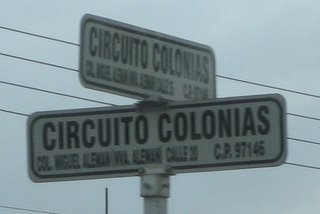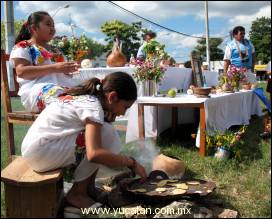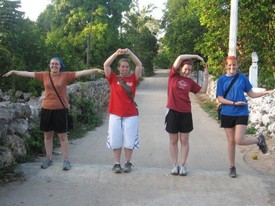 The roads in Mexico are a pleasant surprise compared to the deteriorated byways that we had gotten used to in Costa Rica. We have a wonderfully paved road outside of our home, and it has been some time since I’ve had to swerve like a slalom skier to avoid ramming one of our wheels in a pothole. However, what makes the Mexican driving experience unique are the “topes” (pronounced tow-pays)
The roads in Mexico are a pleasant surprise compared to the deteriorated byways that we had gotten used to in Costa Rica. We have a wonderfully paved road outside of our home, and it has been some time since I’ve had to swerve like a slalom skier to avoid ramming one of our wheels in a pothole. However, what makes the Mexican driving experience unique are the “topes” (pronounced tow-pays)
Topes are the Mexican version of speed bumps, although an American speed bump can’t hold a candle to a tope. Usually taller than they are wide, they’ll give you a bone-shattering shock if you happen to hit one unawares, bringing about a tongue-lashing from any passenger who just might be in your car. Believe me, it only takes one or two of those experiences to learn to slow down when driving, especially through small towns and neighborhoods.
The big problem with topes is that they are usually in the oddest places. From time to time, you can find them before a busy intersection or at a school or church crossing, but often they’re in the middle of nowhere, and the diamond shaped indication signs usually only give you a few feet of warning before your vehicle crashes into the unforgiving mound of resistance.
Topes, though, have a much larger meaning for the missionary or ex-patriot. The tope signifies the unexpected resistance that we experience as we continue in our work of cultural assimilation. Cruising along a comfortable speed, making strides in language, food, and relationships, inevitably we face topes that remind us that the land that we are in, although each day more familiar, is truly foreign.
We’ve been in Mexico almost 8 months now, and we are comfortably eating the yucatecan food, speaking more aporreado (what is referred to as the yucatecan accent), and building friendships with people in and outside of the church community, but we still experience our topes. Mine most recently has been in the form of our front yard.
Formerly working an 8-5 job in the states, I prided myself with the ability to keep up my front yard. I mowed regularly, trimmed the bushes and spread fertilizer in the spring and fall. Not given to excesses, except one post-season when I mowed the Yankees interlocking NY in the grass, I still felt satisfied in having a green, presentable garden.
Remembering all of this, I fell in love with the small, manageable green space that our current house gave me. I had visions of “working the land” again, and looked forward to the wealth of sermon illustrations that this labor of love would afford me, but the more I got involved in the day to day hustle and bustle of being a missionary in Mexico, the less and less time I had to devote to keeping up the garden.
So, by chance, I happened to find a gardener who could help me at least trim our trees. At less than $17 American, it was a deal that I couldn’t afford to pass up. Then came the tope. Unable to find the same gardener, I asked for a recommendation from our landlord. I contracted one of the two he recommended to trim our trees, this time for what I thought would amount to about $20. The bone-shattering shock came, however, when I realized, after the work was done, that it was to be $20 for each tree. Ouch!
Determined not to fall into the same mistake, but still needing a gardener more than ever, I contacted one after comparing the quotes of our neighbor’s gardener and one other who works in the neighborhood. We were needing help for our heat suffering grass and weed infested flowerbeds. After having negotiated what I thought was a good price, I let him go to work, but soon into the labor, I began to find the hidden costs, $20 more for extra insecticide, $70 for more plants, etc. Can someone say “TOPE!”
We expect blockades in ministry. We anticipate the frustrations that we may have to face in communicating our heart in a foreign tongue, but I guarantee that problems with the care of my front lawn never even entered into my mind. Like topes these complications hit me unexpectedly.
Still, I have to say I’m thankful for my tope experiences. Although they’ve been painful, they’ve slowed me down enough to think about my life and work. They’ve proven to me time and time again, that Dave Godzwa alone can’t get the job done. There needs to be someone else involved with a higher perspective, one who can guide us through even the unexpected situations.
So, although I’m sure that I’ll continue to feel the bumps along this road of cultural assimilation, I’ll thank God for them because I know that they’ll slow me down enough to refocus my vision on Him–the one who’s mapping my course, and who just happens to know where those topes are.
Photo Credits:
Above: Members of the Chi Alpha Spring Break Missions Team, Julia, Bethany, Ashley and Kelsey spell tope while standing on one. Photo by Bethany Chroniger
In article description: A photo of a common tope warning sign.
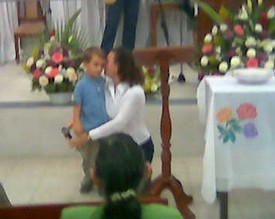 About two weeks ago, (yes, the events of our lives and ministry have taken a toll on my blogging) we celebrated the birthday of our youngest, Jonathan. It was filled with parties–one at school and another here at the house, as well as a mountain of presents, many of which have already made their way to the black hole that our boys call their closet. Of course, all of these things came as no surprise. After celebrating the 19 kids’ parties that we have, from Princess to Bob the Builder to Spider Man to Jungle themes, we’ve come to expect the anticipation, celebration, and sugar withdrawal cycle that each party brings. However, after all of the celebration was over, and Jonathan had time to reflect, he did something unexpected: he decided to testify. In fact it was such a surprise that we didn’t have our camera. The blurry picture was taken with my cell phone.
About two weeks ago, (yes, the events of our lives and ministry have taken a toll on my blogging) we celebrated the birthday of our youngest, Jonathan. It was filled with parties–one at school and another here at the house, as well as a mountain of presents, many of which have already made their way to the black hole that our boys call their closet. Of course, all of these things came as no surprise. After celebrating the 19 kids’ parties that we have, from Princess to Bob the Builder to Spider Man to Jungle themes, we’ve come to expect the anticipation, celebration, and sugar withdrawal cycle that each party brings. However, after all of the celebration was over, and Jonathan had time to reflect, he did something unexpected: he decided to testify. In fact it was such a surprise that we didn’t have our camera. The blurry picture was taken with my cell phone.
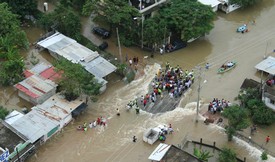 Mondays are usually a low-key day for the Godzwa family. The day after ministry is usually reserved for catching up on household items or replying to correspondence. I had a post planned about the evangelism seminars that we have been leading. But a telephone call from Paul, our mentor missionary here in Mérida, broke the routine. “Dave,” he said, “the situation in Tabasco has gotten out of hand…” The situation he was talking about was the flood that Mexican President Felipe Calderon now calls
Mondays are usually a low-key day for the Godzwa family. The day after ministry is usually reserved for catching up on household items or replying to correspondence. I had a post planned about the evangelism seminars that we have been leading. But a telephone call from Paul, our mentor missionary here in Mérida, broke the routine. “Dave,” he said, “the situation in Tabasco has gotten out of hand…” The situation he was talking about was the flood that Mexican President Felipe Calderon now calls  The roads in Mexico are a pleasant surprise compared to the deteriorated byways that we had gotten used to in Costa Rica. We have a wonderfully paved road outside of our home, and it has been some time since I’ve had to swerve like a slalom skier to avoid ramming one of our wheels in a pothole. However, what makes the Mexican driving experience unique are the “topes” (pronounced tow-pays)
The roads in Mexico are a pleasant surprise compared to the deteriorated byways that we had gotten used to in Costa Rica. We have a wonderfully paved road outside of our home, and it has been some time since I’ve had to swerve like a slalom skier to avoid ramming one of our wheels in a pothole. However, what makes the Mexican driving experience unique are the “topes” (pronounced tow-pays) 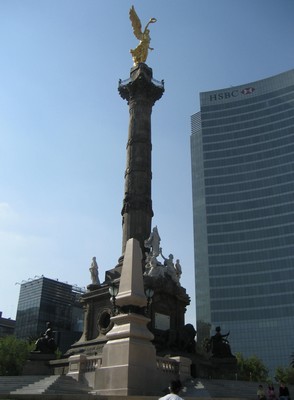 I just wanted to send out a quick update to thank those who had prayed. As you might have read in our
I just wanted to send out a quick update to thank those who had prayed. As you might have read in our 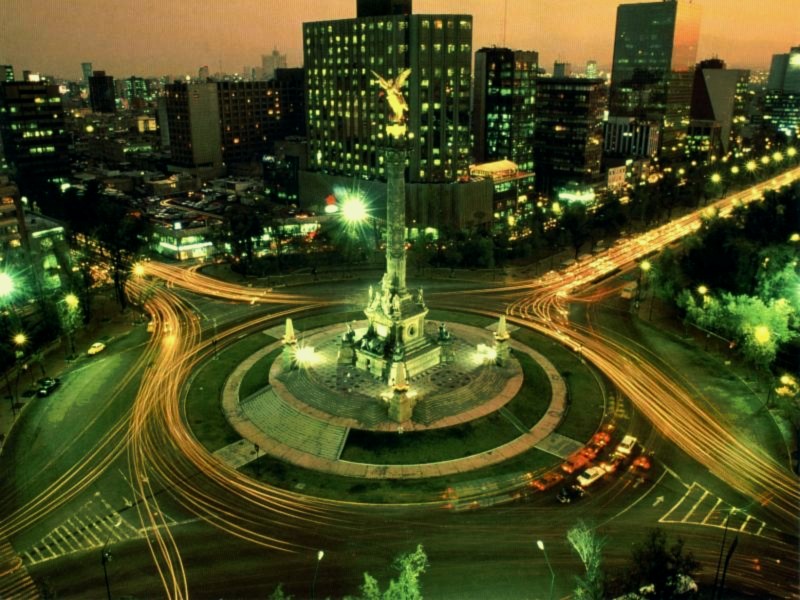 “The City” in the U.S. is of course, New York City. It is one of the most important centers of commerce and culture in the country, and, who can forget, it is also home to the best team in baseball, the
“The City” in the U.S. is of course, New York City. It is one of the most important centers of commerce and culture in the country, and, who can forget, it is also home to the best team in baseball, the  This year, the Godzwa family rang in the New Year a bit differently. No watching the ball drop in Times Square for us. We welcomed 2007 Mexican style. That meant of course there had to be fireworks, lots of them, and the traditional eating of the grapes.
This year, the Godzwa family rang in the New Year a bit differently. No watching the ball drop in Times Square for us. We welcomed 2007 Mexican style. That meant of course there had to be fireworks, lots of them, and the traditional eating of the grapes.